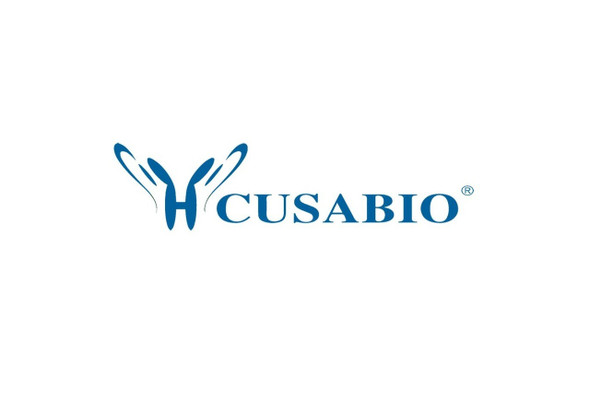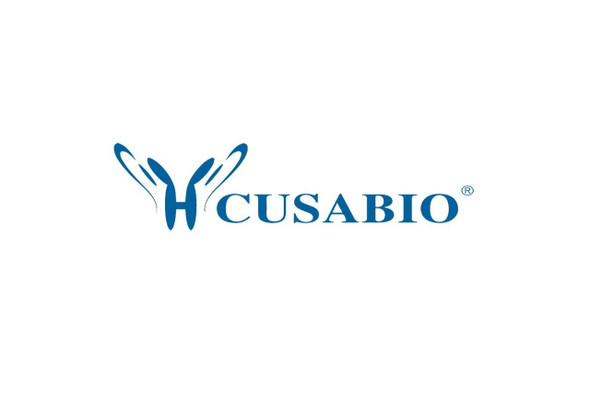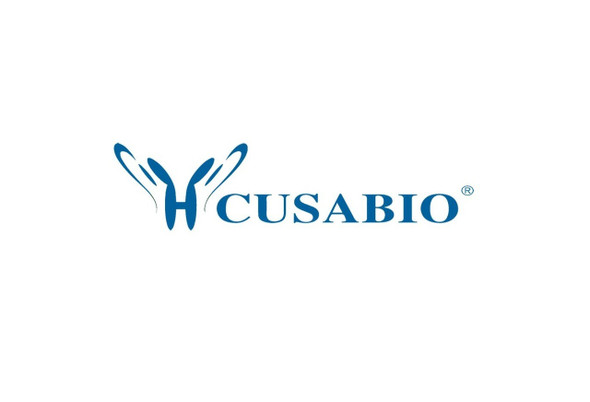Cusabio Active Proteins
Recombinant Human C-C motif chemokine 18 (CCL18) (Active) | CSB-AP000621HU
- SKU:
- CSB-AP000621HU
- Availability:
- 5 to 10 Working Days
Description
Recombinant Human C-C motif chemokine 18 (CCL18) (Active) | CSB-AP000621HU | Cusabio
Protein Description: Full Length of Mature Protein
Alternative Name (s) : Alternative macrophage activation-associated CC chemokine 1, CC chemokine PARC, Dendritic cell chemokine 1, DC-CK1, Macrophage inflammatory protein 4
Gene Names: CCL18,AMAC1,DCCK1,MIP4,PARC,SCYA18
Research Areas: Immunology
Species: Homo sapiens (Human)
Source: E.Coli
Tag Info: Tag-Free
Expression Region: 21-89aa
Sequence Info: AQVGTNKELC CLVYTSWQIP QKFIVDYSET SPQCPKPGVI LLTKRGRQIC ADPNKKWVQK YISDLKLNA
Biological Activity: Fully biologically active when compared to standard. The biological activity determined by a chemotaxis bioassay using human T-lymphocytes is in a concentration of 1.0-10 ng/ml.
MW: 7.9 kDa
Purity: >97% as determined by SDS-PAGE and HPLC.
Endotoxin: Less than 1.0 EU/µg as determined by LAL method.
Relevance: Chemotactic factor that attracts lymphocytes but not monocytes or granulocytes. May be involved in B-cell migration into B-cell follicles in lymph nodes. Attracts naive T-lymphocytes toward dendritic cells and activated macrophages in lymph nodes, has chemotactic activity for naive T-cells, CD4+ and CD8+ T-cells and thus may play a role in both humoral and cell-mediated immunity responses. {ECO:0000269|PubMed:11745396, ECO:0000269|PubMed:11978786}.
PubMed ID: 9233607; 9570561; 9192897; 10049593; 10087196; 19054851; 15489334; 9129202; 11745396; 11978786; 23742785
Notes: Repeated freezing and thawing is not recommended. Store working aliquots at 4℃ for up to one week.
Function: Chemotactic factor that attracts lymphocytes but not monocytes or granulocytes. May be involved in B-cell migration into B-cell follicles in lymph nodes. Attracts naive T-lymphocytes toward dendritic cells and activated macrophages in lymph nodes, has chemotactic activity for naive T-cells, CD4+ and CD8+ T-cells and thus may play a role in both humoral and cell-mediated immunity responses.
Involvement in disease:
Subcellular Location: Secreted
Protein Families: Intercrine beta (chemokine CC) family
Tissue Specificity: Expressed at high levels in lung, lymph nodes, placenta, bone marrow, dendritic cells present in germinal centers and T-cell areas of secondary lymphoid organs and macrophages derived from peripheral blood monocytes. Not expressed by peripheral blood monocytes and a monocyte-to-macrophage differentiation is a prerequisite for expression. Expressed in synovial fluids from patients with rheumatoid and septic arthritis and in ovarian carcinoma ascitic fluid.
Paythway: Chemokinesignalingpathway
Form: Lyophilized powder
Buffer: Lyophilized from a 0.2 μm filtered concentrated solution in 20 mM PB, pH 7.4, 100 mM NaCl.
Reconstitution: We recommend that this vial be briefly centrifuged prior to opening to bring the contents to the bottom. Please reconstitute protein in deionized sterile water to a concentration of 0.1-1.0 mg/mL.We recommend to add 5-50% of glycerol (final concentration) and aliquot for long-term storage at -20℃/-80℃. Our default final concentration of glycerol is 50%. Customers could use it as reference.
Uniprot ID: P55774
Uniprot Entry Name: CCL18_HUMAN
HGNC Database Link: HGNC
UniGene Database Link: UniGene
KEGG Database Link: KEGG
STRING Database Link: STRING
OMIM Database Link: OMIM










